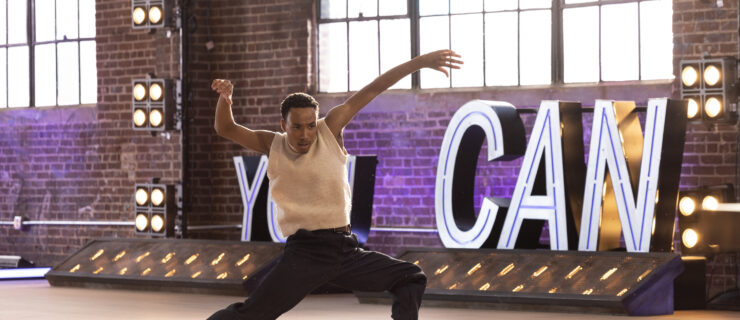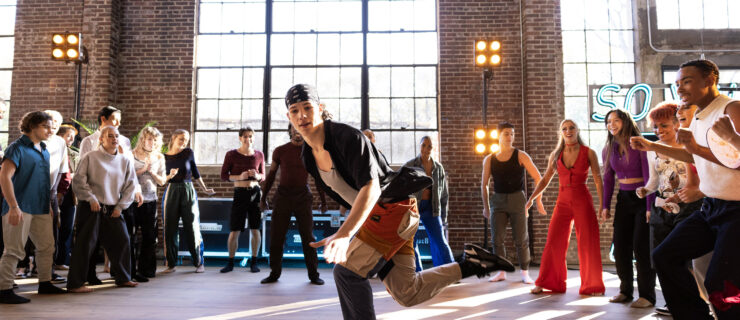Dealing With Double Casting

The first time I ever danced with a partner onstage was as the second-cast lead Reed Flute in my local studio’s production of The Nutcracker. I was in sixth grade and absolutely thrilled. Not only would I get to wear a gorgeous green velvet tutu, learn how to do a presage and get my headshot in the program, but I would also get to rehearse with an older dancer I idolized.
Her name was Keke Harrison*, and she was cast as the first Reed Flute. One of those “perfect” teens—long blonde hair, lovely feet, always had the best leotards. She’d been attending summer programs for years, something I hoped to do one day.
In rehearsal, I studied her every move. I thought everything was going great! Sure, Keke was better than me—she was older, more experienced and first cast. But I was determined to hold my own. Unfortunately, that changed after the first dress rehearsal. At the water fountain, she took me aside and—with a sincere smile—said, “It’s not your fault you look ugly. Your mom just couldn’t afford to send you to summer programs to learn how to partner.”
Needless to say, my confidence was obliterated. Ugly? I looked ugly? I began to doubt everything—how I held my upper body, how I work my feet in my pointe shoes, even whether my partner found me intolerable. It’s the only time I’ve had stage fright.
For many dancers, this story is all too familiar. Being second-cast comes with many challenges, like dealing with feelings of inadequacy and learning the difference between healthy and unhealthy competition. To help you cultivate a beneficial relationship with your role mates, DS asked the experts for tips on surviving life in the second cast.
1. Communicate.
If another dancer is being catty or rude, understand that she may feel threatened. “A lot of people who act like prima donnas are the least secure,” says Dr. Michelle New, an adolescent psychologist and director of Kentlands Kids in Gaithersburg, MD. “Take her aside and ask for help,” she says. “It will soothe their ego.” This will benefit both you and her and perhaps establish a working relationship between the two of you that you can count on for help in the future.
2. Make it your own.
Try not to copy every last detail of your role mate’s interpretation, unless the choreographer calls for it. It’s important to find your own nuances within the choreography because those are what make you stand out as a dancer. Plus, no two dancers will ever look exactly the same, since bodies, technique and expressions are personal to each dancer.
3. Listen to every correction.
The first cast often rehearses in the front, while the second cast works to the side or in the back, says Caitlin Peabody of Boston Ballet II. When it’s your turn to dance, you’ll be expected not only to know all the choreography and spacing, but also to have implemented any corrections given to the first cast. A rehearsal director doesn’t want to waste time by repeating feedback! If you’re prepared, it may help you land a bigger part in the future.
4. Work together.
Sharing a role with another dancer should be a learning experience that prepares you for the professional dance world. Sometimes the quantity of performances necessitates double, triple and quadruple casting. This also translates to non-dance careers, where the ability to work on a team is an important skill. In the professional world, you may find yourself working on a project where you don’t receive all the credit or answering to a peer about your responsibilities. With the experience of dancing in the second cast, you will understand how to handle these situations emotionally, and therefore, more professionally.
5. Give each other feedback.
Agree to give one another constructive criticism, just be sure to point out positive elements, too. “Encourage each other so that when you go out there, it’s the best job the two of you could do together,” says Linda Walker, artistic director of Tuscon Regional Ballet in Arizona.
6. Practice healthy competition.
Healthy competition is motivating and enjoyable. Unhealthy competition results when another dancer’s success depresses you and failure delights you. Dancers should take pride in each other. Make sure you are encouraging one another and wishing each other the best.
7. Manage your stress.
The more stressed you are, the more likely you’ll snap or overreact. Insecurity, hormones, hunger and fatigue all contribute to stress and bad behavior. If you can identify what makes you hypersensitive or temperamental, then you will be able to work harder to control those factors. Make sure you’re eating a proper diet and find ways to relax. Listen to soothing music, read a favorite magazine, take a warm bath or get a massage.
8. Do an ego check.
Insecurity can turn even the sweetest person into a monster. Remind yourself that you were cast in this role for a reason. Your teachers believe in you and want you to do well, so ease up on your perfectionism. “For a dancer, one mistake is a total disaster,” says Dr. New. “But if you can cope with making a mistake, you’ll be less prone to second-guessing yourself.”
9. Ask for more studio time.
If you aren’t getting enough rehearsal time—this can be even more problematic if you share a partner—go into a spare studio by yourself. Even better: team up with your role-mate. Walker encourages her students to work on their own, so when they show up for rehearsal, they’ve both improved.
10. Accept yourself.
There will always be someone better than you—whether it’s a student in Thursday night’s modern class or third-period geometry. The sooner you realize this, the better you’ll feel. If you give your personal best, then your performance will be nothing less than a total success. Keep pushing yourself, and soon, you’ll find yourself in the spotlight!
*Name has been changed.




